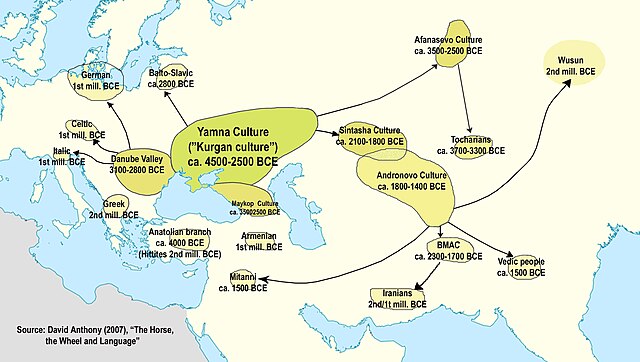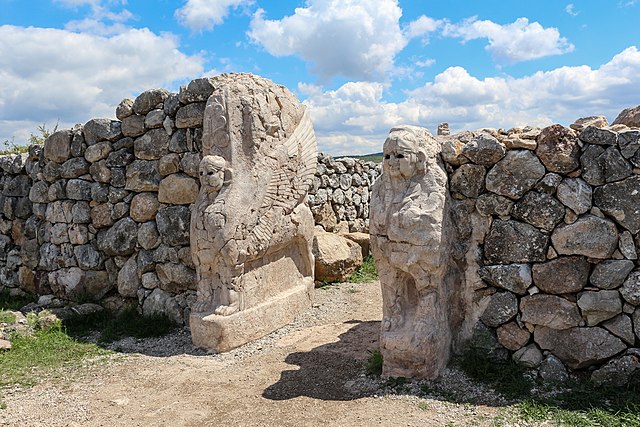The Lydians were an Anatolian people living in Lydia, a region in western Anatolia, who spoke the distinctive Lydian language, an Indo-European language of the Anatolian group.
Lydian soldier (Old Persian cuneiform 𐎿𐎱𐎼𐎭, Sparda) of the Achaemenid army, Xerxes I tomb, c. 480 BC.
Lydia c. 50 AD, with the main settlements and Greek colonies.
Portrait of Croesus, last King of Lydia, Attic red-figure amphora, painted c. 500–490 BCE.
Early 6th century BC coin minted by a King of Lydia
The Anatolians were Indo-European-speaking peoples of the Anatolian Peninsula in present-day Turkey, identified by their use of the Anatolian languages. These peoples were among the oldest Indo-European ethnolinguistic groups and one of the most archaic, because Anatolians were among the first Indo-European peoples to separate from the Proto-Indo-European community that gave origin to the individual Indo-European peoples.
Indo-European migrations as described in The Horse, the Wheel, and Language by David W. Anthony
Sphinx Gate entrance at Hattusa, capital of the Hittite Empire.
Relief of Yariri and Kamani, 8th-century BC Luwian rulers of Carchemish, a Neo-Hittite State (despite the name, Neo-Hittites were overwhelmingly Luwians and not Hittites).







